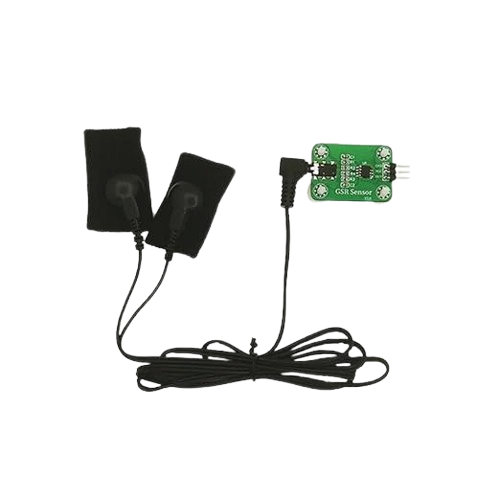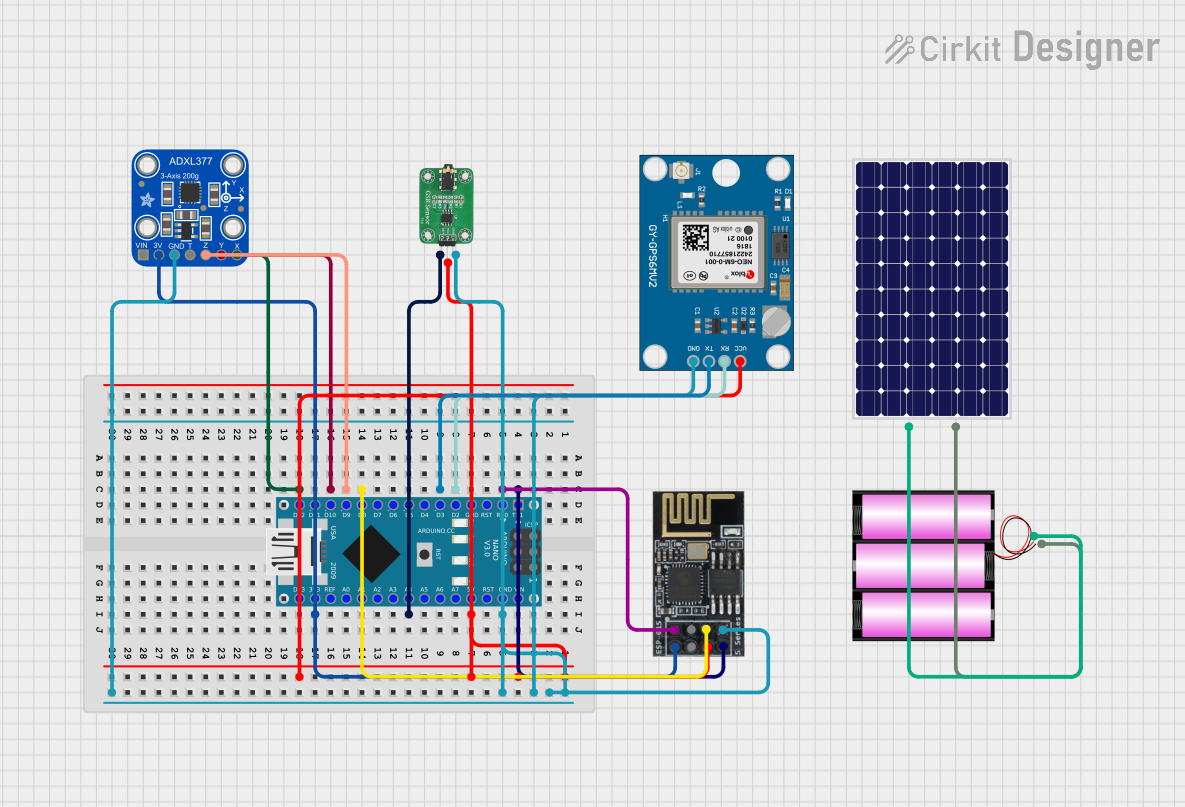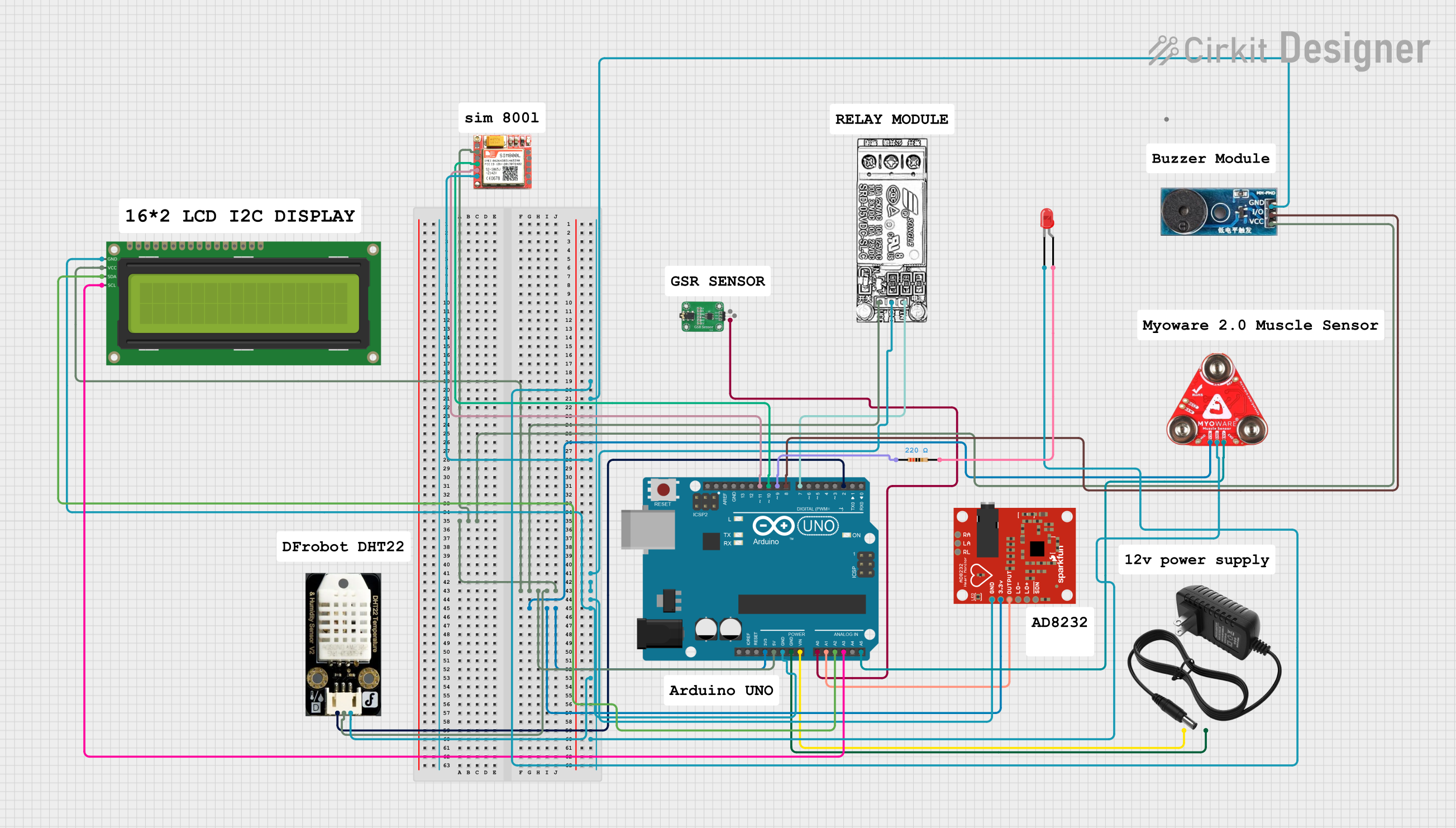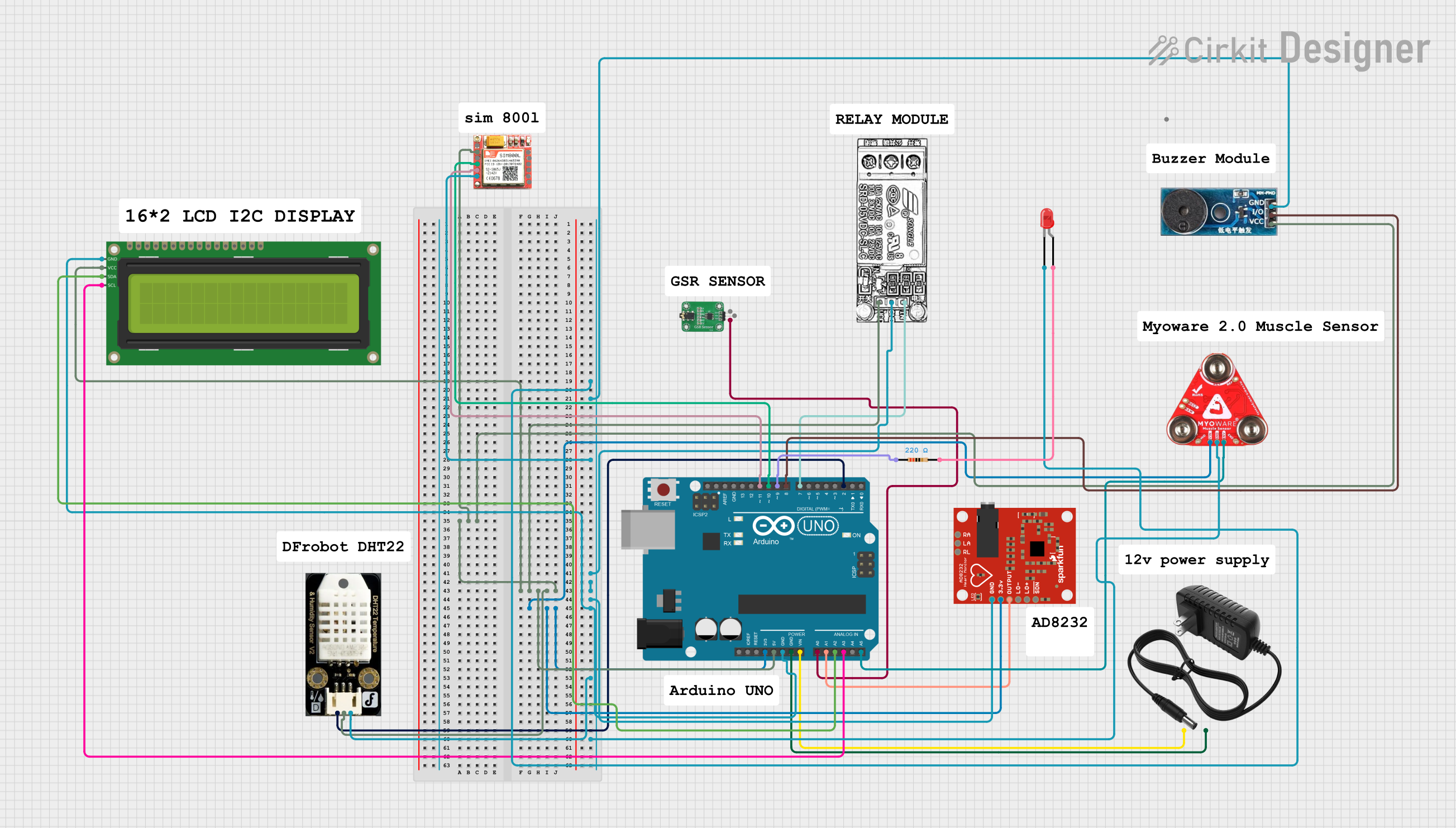
How to Use Techtonics GSR Galvanic Skin Response Module Current Sensor Kit V2.0: Examples, Pinouts, and Specs

 Design with Techtonics GSR Galvanic Skin Response Module Current Sensor Kit V2.0 in Cirkit Designer
Design with Techtonics GSR Galvanic Skin Response Module Current Sensor Kit V2.0 in Cirkit DesignerIntroduction
The Techtonics GSR Galvanic Skin Response Module Current Sensor Kit V2.0 is a specialized sensor designed to measure changes in skin conductivity, which occur due to variations in emotional or physiological arousal. This module detects the electrical conductance of the skin, which is influenced by sweat gland activity and is commonly used as an indicator of stress, excitement, or other emotional states.
This module is widely used in:
- Biofeedback systems: To monitor stress levels and provide real-time feedback for relaxation techniques.
- Wearable technology: For tracking emotional states in fitness and health monitoring devices.
- Research and education: In psychology, neuroscience, and human-computer interaction studies.
- Gaming and entertainment: To create immersive experiences by integrating emotional feedback.
Explore Projects Built with Techtonics GSR Galvanic Skin Response Module Current Sensor Kit V2.0

 Open Project in Cirkit Designer
Open Project in Cirkit Designer
 Open Project in Cirkit Designer
Open Project in Cirkit Designer
 Open Project in Cirkit Designer
Open Project in Cirkit Designer
 Open Project in Cirkit Designer
Open Project in Cirkit DesignerExplore Projects Built with Techtonics GSR Galvanic Skin Response Module Current Sensor Kit V2.0

 Open Project in Cirkit Designer
Open Project in Cirkit Designer
 Open Project in Cirkit Designer
Open Project in Cirkit Designer
 Open Project in Cirkit Designer
Open Project in Cirkit Designer
 Open Project in Cirkit Designer
Open Project in Cirkit DesignerTechnical Specifications
The following table outlines the key technical details of the Techtonics GSR Module:
| Parameter | Specification |
|---|---|
| Operating Voltage | 3.3V - 5V DC |
| Output Signal | Analog voltage (0-1023 for 10-bit ADC) |
| Current Consumption | < 10mA |
| Sensor Type | Galvanic Skin Response (GSR) |
| Output Range | 0.1V - 4.9V (depending on skin conductance) |
| Dimensions | 32mm x 22mm x 8mm |
| Weight | 5g |
Pin Configuration
The module has a simple 3-pin interface for easy integration into circuits. The pin configuration is as follows:
| Pin | Name | Description |
|---|---|---|
| 1 | VCC | Power supply input (3.3V - 5V DC) |
| 2 | GND | Ground connection |
| 3 | OUT | Analog output signal proportional to skin conductance |
Usage Instructions
Connecting the Module
- Power the module: Connect the
VCCpin to a 3.3V or 5V power source and theGNDpin to the ground of your circuit. - Read the output: Connect the
OUTpin to an analog input pin of a microcontroller (e.g., Arduino UNO) to read the sensor's output signal. - Attach electrodes: Place the included electrodes on the skin (e.g., fingers or palm) to measure skin conductance. Ensure the electrodes are securely attached for accurate readings.
Example Circuit with Arduino UNO
Below is an example of how to connect the GSR module to an Arduino UNO:
| GSR Module Pin | Arduino UNO Pin |
|---|---|
| VCC | 5V |
| GND | GND |
| OUT | A0 |
Sample Arduino Code
The following code reads the analog output from the GSR module and displays the values in the Serial Monitor:
// Define the analog pin connected to the GSR module
const int GSR_PIN = A0;
void setup() {
// Initialize the serial communication at 9600 baud rate
Serial.begin(9600);
}
void loop() {
// Read the analog value from the GSR module
int gsrValue = analogRead(GSR_PIN);
// Print the GSR value to the Serial Monitor
Serial.print("GSR Value: ");
Serial.println(gsrValue);
// Add a small delay to stabilize readings
delay(500);
}
Best Practices
- Electrode placement: Ensure the electrodes are placed on clean, dry skin for accurate measurements. Avoid areas with excessive hair or oil.
- Avoid noise: Keep the module and wires away from high-frequency noise sources to prevent interference.
- Calibration: The output values may vary between individuals. Perform a baseline calibration for each user to interpret the readings effectively.
- Power supply: Use a stable power source to avoid fluctuations in the output signal.
Troubleshooting and FAQs
Common Issues and Solutions
| Issue | Possible Cause | Solution |
|---|---|---|
| No output signal | Incorrect wiring or loose connections | Verify all connections and ensure proper wiring. |
| Fluctuating or noisy readings | Electrical interference or unstable power | Use shorter wires and a stable power source. |
| Low sensitivity or no response | Poor electrode contact with the skin | Ensure electrodes are securely attached to clean, dry skin. |
| Output values are inconsistent | Variations in skin moisture or temperature | Allow the user to acclimate to the environment before measurement. |
FAQs
Can this module be used with a 3.3V microcontroller?
Yes, the module operates within a voltage range of 3.3V to 5V, making it compatible with 3.3V systems like ESP32 or Raspberry Pi Pico.What is the typical range of GSR values?
The output range depends on the individual's skin conductance. For a 10-bit ADC, values typically range from 0 to 1023, with higher values indicating higher conductance.How do I interpret the GSR readings?
GSR readings are relative and should be interpreted based on a baseline measurement. Sudden increases in values often indicate emotional arousal or stress.Can I use this module for medical purposes?
This module is intended for educational and experimental purposes only. It is not certified for medical diagnostics or treatment.
By following this documentation, you can effectively integrate the Techtonics GSR Galvanic Skin Response Module into your projects and gain valuable insights into emotional and physiological states.